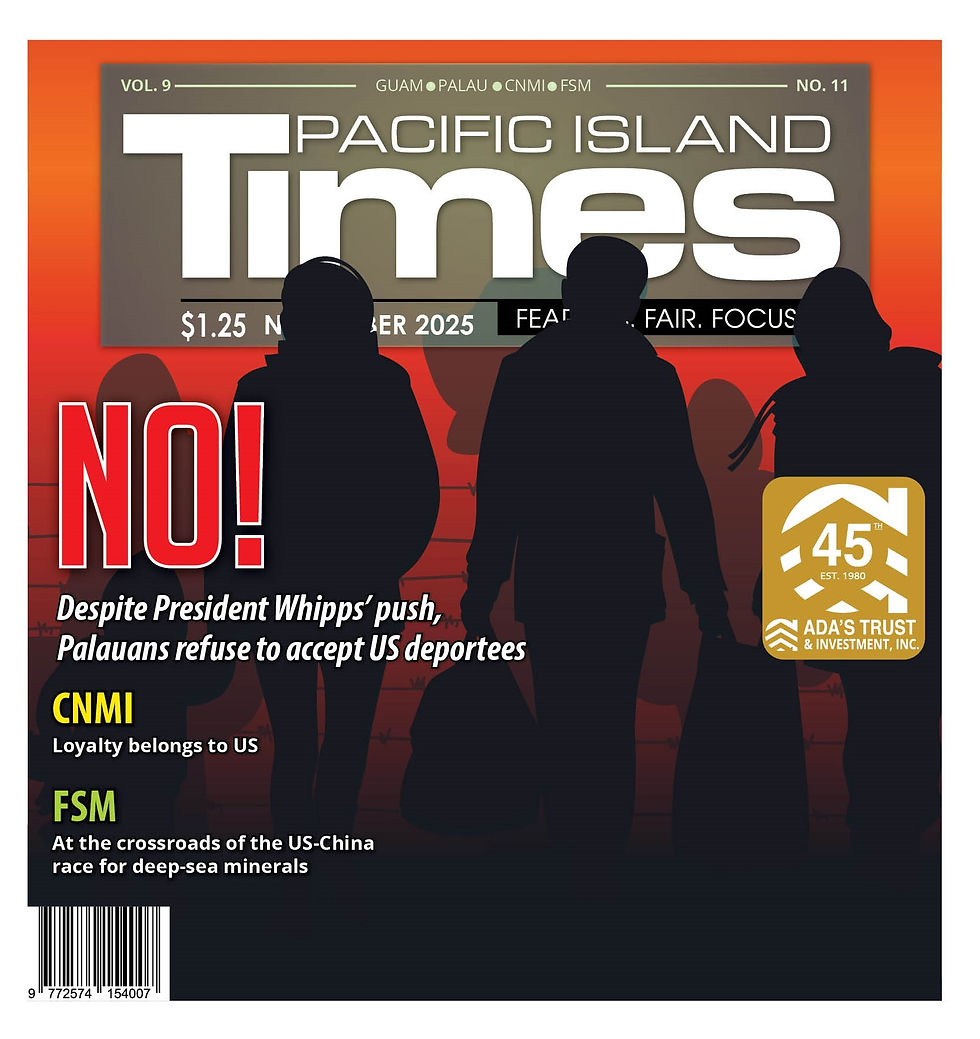Guam, CNMI leaders tell US: Impact of deep-sea mining requires scientific study
- Admin

- 1 minute ago
- 2 min read

By Pacific Island Times News Staff
It requires more than 30 days to analyze the potential impact of the federal government’s plan to unleash the high seas near the Marianas for deep-sea mining, Guam Gov. Lou Leon Guerrero and CNMI Gov. David Apatang said.
"There must be more scientific research to understand the true impacts of this form of mineral extraction,” Leon Guerrero said in a statement.
She joined CNMI Gov. David Apatang in requesting more time to respond to the federal government's plan.
“Both governments require additional time to conduct coordinated technical reviews and stakeholder consultations, including with coastal management program offices, environmental protection agencies, port authorities, marine research institutions, natural resource and marine management agencies,” the governors said in a letter to Matthew Giacona, acting director of the Bureau of Ocean Energy and Management.
The bureau issued the request for information on Nov. 12, soliciting industry interest in commercial leasing of the outer continental shelf offshore the CNMI. The current deadline to submit a comment is Dec. 12. The governor requested a 120-day extension.
“A 30-day window is insufficient for both of our island governments and our
shared regional stakeholders to provide comprehensive and informed feedback
on a matter with wide-ranging environmental, economic, cultural and jurisdictional implications,” Leon Guerrero and Apatang wrote.
According to the bureau’s solicitation, the target area is located west of the Mariana Trench National Monument along the eastern edge of the U.S. exclusive economic zone.
The area is approximately 35,483,044 acres, with an approximate water depth of 3,700-25,100 feet, and lies entirely within federal waters. The southern boundary area is roughly an equal distance between Guam and Rota. The closest
distance from Saipan is about 128 statute miles.
“This proximity underscores the potential for offshore mineral leasing activity in the designated area to have transboundary impacts across the entire Mariana
Archipelago,” Leon Guerrero and Apatang said.
Noting that Guam and the CNMI “share a connected ocean ecosystem,
interdependent economies and deep cultural and historical ties to these waters,” the governors said any federal action in the area must take into account the perspectives and interests of both territories.
“A 120-day extension will allow our respective governments to review geospatial data, evaluate environmental risk factors, assess potential socioeconomic impacts and compile community concerns,” the governors said.
“It will also ensure our comments are well-supported, data-driven and reflective
of the priorities of our island communities," they added.
The U.S. Geological Survey's report profiling marine mineral resources in the Pacific Islands indicates that the CNMI sits on an unexplored wealth, such as cobalt-rich iron-manganese crusts, iron-manganese nodules, phosphorite, epithermal gold, hydrothermal manganese and iron oxide, hydrothermal polymetallic sulfides and phosphorite.
In a press statement, Leon Guerrero noted that "little scientific research has been conducted on the ocean's depths, including the environmental impacts of deep-sea mining."
“We must come together and make our voices heard to ensure any decisions regarding the future of the waters of Guam and the CNMI are made with our best interests in mind,” Leon Guerrero said.
The U.S. is also targeting American Samoa for marine mineral exploration. However, the plan is facing resistance in the U.S. territory.
Former Gov. Lemanu Mauga has issued an executive order declaring a moratorium on deep-sea mining in the waters, which upheld by his successor, Gov. Pulaali'i Nikolao Pula.
Subscribe to
our monthly
digital edition






